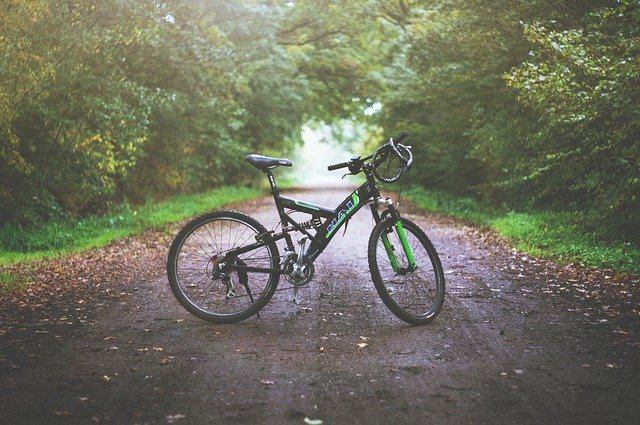
You don’t need steep trails and rugged mountains to go mountain biking. Just about any off-pavement riding will be rewarding. From scenic views to downhill stretches there are many moments where you will feel light— both physically and mentally.
There will also be many moments where you have to work— and work hard. For some beginners, if they don’t have the right skills they can become discouraged and frustrated. Here are four basic techniques to help beginner mountain bikers get started with confidence and ease.
Get better at smooth, controlled cornering
Taking corners like a pro is all about the hips. Practice synchronising your hips, head and legs off the trail and on flat ground first. Lean the bike over while swinging your hips and dipping your outside pedal at the same time. The deeper your lean, the more you’ll move the pedal and hips. Keep your thighs parallel and your eyes fixed on where you want to finish your turn.
When you are ready to take on a curve, look for the longest, smoothest arc and brake gently before the turn. This will help your wheels grip and keep the front tire from washing out.
Maximize your effort by getting your body in the right position
Your body position is foundational to successful mountain bike riding. From rocks to roots, mountain bike trail surfaces can be rugged and unpredictable. While this is part of the thrill of mountain biking, it can be a bit intimidating to beginners. Being in the right body position helps you maneuver technical areas with confidence and ease.
There are two primary body positions: neutral and ready (also called attack). When you’re coasting on non-technical sections of trail, take a neutral position on the bike. Keep your pedal level, have a slight bend in the knees and elbows and keep your fingers gently on the brake levers. When the trail becomes more challenging, move into the ready position with a deep bend in the knees and elbows and your bottom lifted off the seat and a flat back nearly parallel to the ground.
Stay safe and keep the ride smooth by balancing speed and braking
If you get nervous, the temptation to pull both brakes with your entire being is great. However, this is one of the quickest ways to topple over your handlebars and get a face full of trail. If you adjust your speed before the trail gets more technical, you’ll be able to maintain your speed with only light touches on the brakes.
While braking, try to just use two fingers to gently tap the brakes. Position your body with hips back, heels down and a slight bend in your knees and elbows. This positions you for optimal braking power and control while riding. The ideal is to cultivate a controlled momentum to successfully maneuver difficult turns, corners and sections of trail.
Set your suspensions to active to keep you and your bike flexible and adaptable
Mountain bikes typically have a front suspension fork and many have a shock absorber in the back. When set correctly, jagged roots and large bumps are less jarring when you roll over them. It will take a little trial and error to learn the finer nuances of setting your suspension to help when you are just sitting on the bike (known as sag) and when you’re bounding down a highly technical trail.
If you want to strengthen your technical skills, one of the easiest ways is to ride with more experienced mountain bikers. If that’s not available, YouTube has an endless array of videos and tutorials you can watch to get practical, applicable tips for a better mountain bike experience.